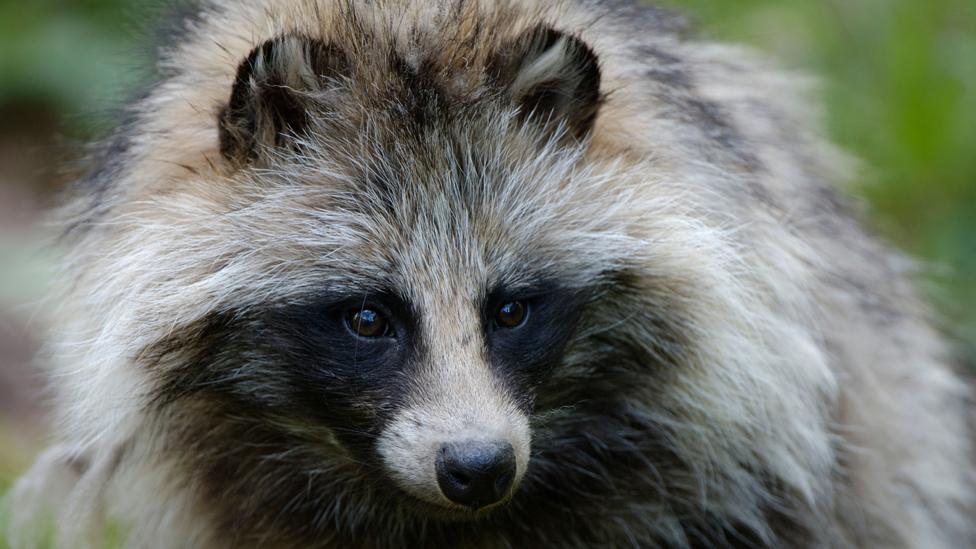Raccoons are clever animals, often seen as independent. But do they get help from other animals?
Yes, certain animals do assist raccoons in various ways. Raccoons, known for their adaptability, sometimes benefit from unexpected allies in the wild. These animals help raccoons find food or offer protection. Understanding these relationships offers a glimpse into the natural world’s complexity.
In this blog, we will explore which animals help raccoons and how they do it. By learning about these unique partnerships, we gain a better appreciation for the interconnectedness of nature. Dive in to discover the surprising friends of raccoons and the roles they play in their survival.

Credit: www.humanesociety.org
Overviews of Contents
ToggleIntroduction To Nature’s Unlikely Allies
Nature is full of surprises. Animals often form unexpected partnerships. These alliances help them survive. The raccoon is one such creature. Its role in the ecosystem is vital. Let’s explore these surprising animal partnerships.
Raccoon’s Role In The Ecosystem
Raccoons are nocturnal creatures. They are scavengers. This means they clean up the environment. They eat almost anything. This includes insects, fruits, and small animals. Raccoons also help spread seeds. They do this by eating fruits and excreting the seeds elsewhere. This aids in plant growth. Additionally, they control the population of pests. Their presence keeps the ecosystem balanced.
Need to understand more about Great Deals? This post might help you. Why Do Raccoons Wash Their Food?: Unveiling the Curious Habit
Surprising Animal Partnerships
Raccoons have some surprising allies. One such ally is the opossum. Opossums and raccoons often share food sources. They rarely compete. Instead, they coexist peacefully. This cooperation benefits both species.
Another unexpected partner is the skunk. Skunks and raccoons sometimes forage together. They search for food in the same areas. This collaboration reduces food competition. Both animals benefit from finding food more efficiently.
Lastly, the owl is a surprising friend. Owls and raccoons share hunting grounds. Owls hunt from above. Raccoons hunt on the ground. This means they do not compete for the same prey. Their coexistence helps maintain balance in the ecosystem.

Credit: www.wihumane.org
Symbiotic Relationships
Symbiotic relationships in nature show how different species help each other. These interactions benefit both parties. They are crucial for survival. This concept applies to raccoons too. Certain animals assist raccoons in unique ways. Let’s explore these relationships.
Mutual Benefits
Mutual benefits are common in nature. Both species gain something valuable. Raccoons often form such bonds. These partnerships help them find food and stay safe.
For example, raccoons and certain birds work together. Birds alert raccoons to danger. In return, raccoons leave scraps for the birds. Both benefit from this arrangement. It shows the power of teamwork in nature.
Curious about Great Deals? We've got more info in this linked article. How to Keep Raccoons Away: Effective Tips and Tricks
Examples In Nature
Raccoons have various helpful relationships. One example is with owls. Owls hunt at night like raccoons. They keep an eye out for each other. Owls warn raccoons of predators. Raccoons, being on the ground, can spot food sources for owls.
Another example involves small mammals. Squirrels and raccoons sometimes share spaces. They help each other find food. Squirrels climb trees for nuts. Raccoons can reach lower food sources. Together, they maximize their chances of finding enough to eat.
Raccoon And The Opossum
The raccoon and the opossum are two nocturnal creatures that often share the same environments. These fascinating animals have developed unique interactions that benefit each other. Let’s explore how their relationship works.
Shared Habitats
Raccoons and opossums live in a variety of habitats. They are found in forests, urban areas, and near water sources. Their ability to adapt makes them common neighbors.
Both animals seek out places with abundant food and shelter. They often find these resources in the same locations. This shared habitat promotes their interactions.
Here is a table showcasing their preferred habitats:
| Animal | Preferred Habitats |
|---|---|
| Raccoon | Forests, urban areas, near water sources |
| Opossum | Forests, urban areas, near water sources |
Complementary Behaviors
Raccoons and opossums have different but complementary behaviors. This allows them to coexist peacefully. Raccoons are known for their dexterous paws and clever problem-solving skills. They can open containers and find hidden food sources.
Opossums, on the other hand, are scavengers. They clean up what raccoons leave behind. This reduces waste and helps keep their shared environment clean.
Here are some examples of their complementary behaviors:
- Raccoons open trash bins; opossums clean up the leftovers.
- Raccoons find hidden food; opossums eat the remnants.
- Raccoons disturb insect nests; opossums consume the insects.
By understanding the relationship between raccoons and opossums, we can appreciate how these animals help each other. Their interactions are beneficial and fascinating to observe.

Credit: www.bbc.com
Interested in more about Great Deals? Here's an article you might find helpful. How to Keep Raccoons Out of Your Yard: Proven Strategies
Raccoon And The Skunk
In the animal kingdom, raccoons and skunks are known for their unique partnership. While they differ in many ways, they share some common interests. This collaboration helps both species survive and thrive in their natural habitats.
Defense Mechanisms
Raccoons and skunks both have strong defense mechanisms. The raccoon uses its sharp claws and teeth to defend itself. It can also climb trees to escape danger.
On the other hand, the skunk has its famous spray. This pungent liquid can deter most predators. When threatened, the skunk raises its tail and sprays, forcing the attacker to retreat.
Together, these animals form a protective alliance. The raccoon’s agility complements the skunk’s chemical defense. This combination makes it difficult for predators to catch them both.
Foraging Cooperation
Raccoons and skunks often forage for food together. The raccoon is a great climber and can reach fruits and nuts high in trees. It also has nimble fingers that can open containers or dig for insects.
Meanwhile, the skunk uses its strong sense of smell to find hidden food sources. It can dig through soil and uncover insects, grubs, and other tasty treats.
Their cooperation increases their chances of finding food. While the raccoon climbs or digs, the skunk stands guard. This teamwork ensures they both get a share of the bounty.
Here is a table showcasing their foraging skills:
| Animal | Foraging Skill |
|---|---|
| Raccoon | Climbing, Digging, Opening Containers |
| Skunk | Smelling, Digging |
This symbiotic relationship benefits both animals. By working together, they maximize their food resources and enhance their survival chances.
Explore more about Great Deals with this related post. Are Raccoons Nocturnal Animals? Unveiling Their Nightlife Secrets
Raccoon And The Fox
The raccoon and the fox share a unique relationship in the wild. They are often seen near each other, cooperating in ways that benefit both. This partnership shows the incredible adaptability and intelligence of these animals.
Territory Sharing
Raccoons and foxes often share the same territories without conflict. They mark their areas, but their needs do not always overlap. Foxes and raccoons find different spots for resting and hunting. This helps them avoid direct competition.
Resource Allocation
Both animals use resources in a way that benefits each other. Raccoons are skilled at foraging and often uncover hidden food. Foxes, on the other hand, are excellent hunters. They catch prey that raccoons might miss. This division of labor ensures they both get enough to eat.
Raccoon And The Owl
The raccoon and the owl share a unique relationship. Both animals are nocturnal and have overlapping habitats. They often find themselves in the same forests or urban areas. This coexistence creates a dynamic interaction that benefits both species.
Predator-prey Dynamics
Raccoons and owls have an interesting predator-prey relationship. Owls prey on small mammals and insects, which raccoons also hunt. This overlap in diet reduces competition.
Owls have keen eyesight and sharp talons. They can easily catch prey that raccoons might miss. Raccoons, on the other hand, are skilled at scavenging. They often find food that owls leave behind. This balance helps both animals thrive.
Nocturnal Activities
Both raccoons and owls are active at night. This shared nocturnal lifestyle allows them to avoid daytime predators. It also means they are often foraging for food at the same times. Their activities can be complementary.
Owls hunt from above, using their silent flight to catch prey. Raccoons forage on the ground, using their dexterous paws to find food. This combination of aerial and ground foraging ensures a diverse food supply for both.
Here’s a simple table illustrating their nocturnal activities:
| Activity | Raccoon | Owl |
|---|---|---|
| Hunting | Ground foraging | Silent flight |
| Diet | Small mammals, insects, fruits | Small mammals, insects |
| Habitat | Forests, urban areas | Forests, urban areas |
This table shows how raccoons and owls have adapted to their nocturnal lifestyles. Their different methods of foraging reduce competition and enhance survival.
Raccoon And The Beaver
Beavers help raccoons by building dams and lodges. These structures create safe spaces for raccoons to find food. Together, they thrive in shared habitats.
Raccoons are adaptable creatures. They thrive in many environments. One of their surprising allies is the beaver. These two animals interact in nature. Their relationship benefits both species. Let’s explore how they help each other.Water Source Sharing
Beavers build dams. These dams create ponds. Ponds provide water for raccoons. Raccoons need water to drink and find food. They hunt for fish and frogs in the ponds. Beavers benefit too. Raccoons eat insects that might harm beaver lodges.Habitat Modification
Beavers change landscapes. Their dams create wetlands. Wetlands are rich in resources. Raccoons find shelter and food there. They use the trees and plants for nests. They also find berries and nuts to eat. This habitat supports many animals. By working together, raccoons and beavers improve their environment. Their partnership is an example of nature’s balance. “`Conservation Implications
The raccoon, known for its cleverness, often relies on various partners in the wild. Understanding these partnerships is crucial for conservation efforts. Protecting these relationships helps maintain the balance in ecosystems.
Protecting Biodiversity
Conservation of raccoon partnerships supports biodiversity. Biodiversity ensures ecosystem stability. Diverse species interactions create a healthy environment. The raccoon’s partners help control insect populations. This reduces pests and promotes plant growth. Birds, for example, help raccoons by eating insects. This mutual benefit highlights the importance of protecting these species.
Another key partner is the coyote. Coyotes and raccoons share hunting grounds. This reduces competition and balances predator-prey dynamics. Maintaining these relationships supports ecosystem health. Protecting one species often benefits many others.
Human Impact On Animal Partnerships
Human activities often disrupt animal partnerships. Habitat destruction is a major threat. Urban development destroys forests and wetlands. This forces raccoons and their partners to find new homes. Displacement can break essential ecological bonds.
Pollution also harms these relationships. Chemicals in water and soil affect the health of animals. Sick animals cannot maintain their roles in ecosystems. This weakens the natural partnerships.
Conservation efforts must consider these impacts. Protecting habitats and reducing pollution are key steps. By safeguarding the environment, we support raccoons and their partners. This helps preserve the intricate web of life.
Frequently Asked Questions
What Animals Are Friends With Raccoons?
Raccoons often interact with skunks, opossums, and foxes. These animals sometimes share habitats or food sources. However, they are not always friendly and can compete for resources.
Do Raccoons Form Partnerships With Other Animals?
Raccoons occasionally form loose associations with other animals like opossums. These relationships are usually based on shared resources or mutual benefits, not strong partnerships.
Can Raccoons And Birds Coexist?
Raccoons and birds can coexist, especially around water sources. However, raccoons may raid bird nests for eggs, creating conflict between them.
Are Raccoons Solitary Or Social Animals?
Raccoons are generally solitary but can be social in urban environments. They may forage together or share den sites, especially during winter.
Conclusion
Raccoons often find help from unexpected friends in the wild. These allies include birds and even other mammals. Their teamwork ensures survival and a better chance to thrive. Understanding these relationships gives us a glimpse into nature’s balance. Next time you see a raccoon, remember its hidden friends.
They all play a role in the ecosystem. Nature works best with cooperation.





